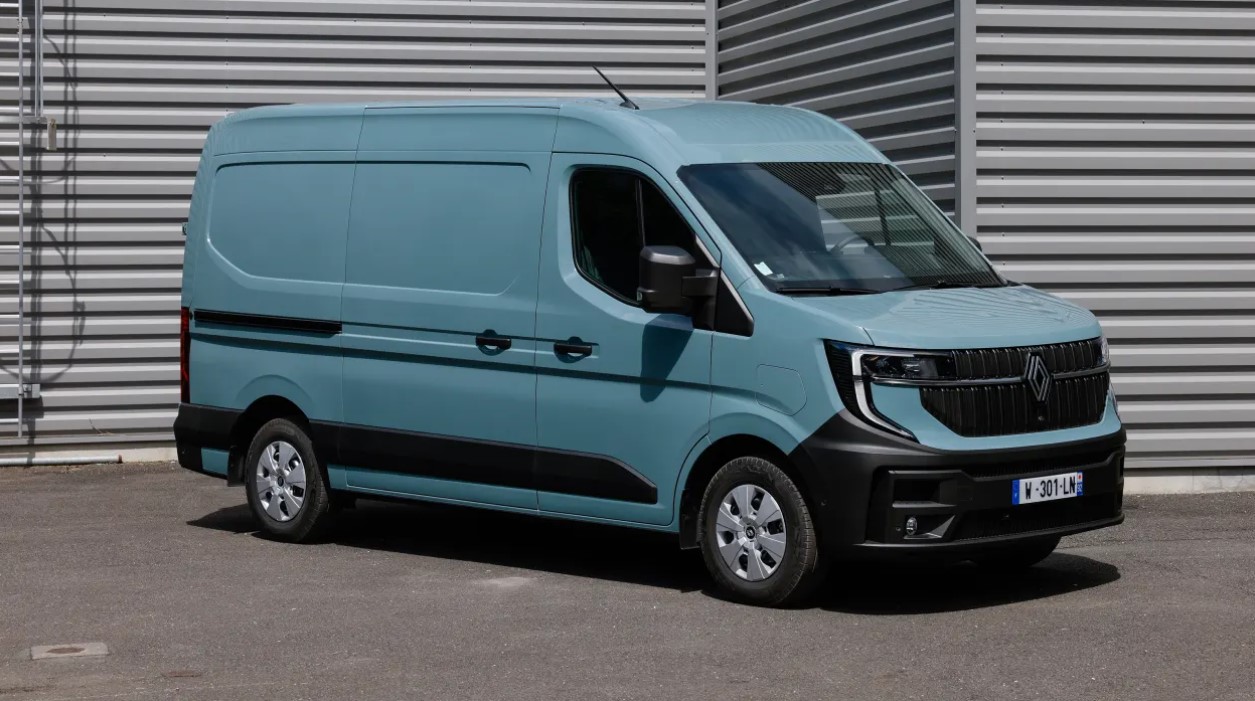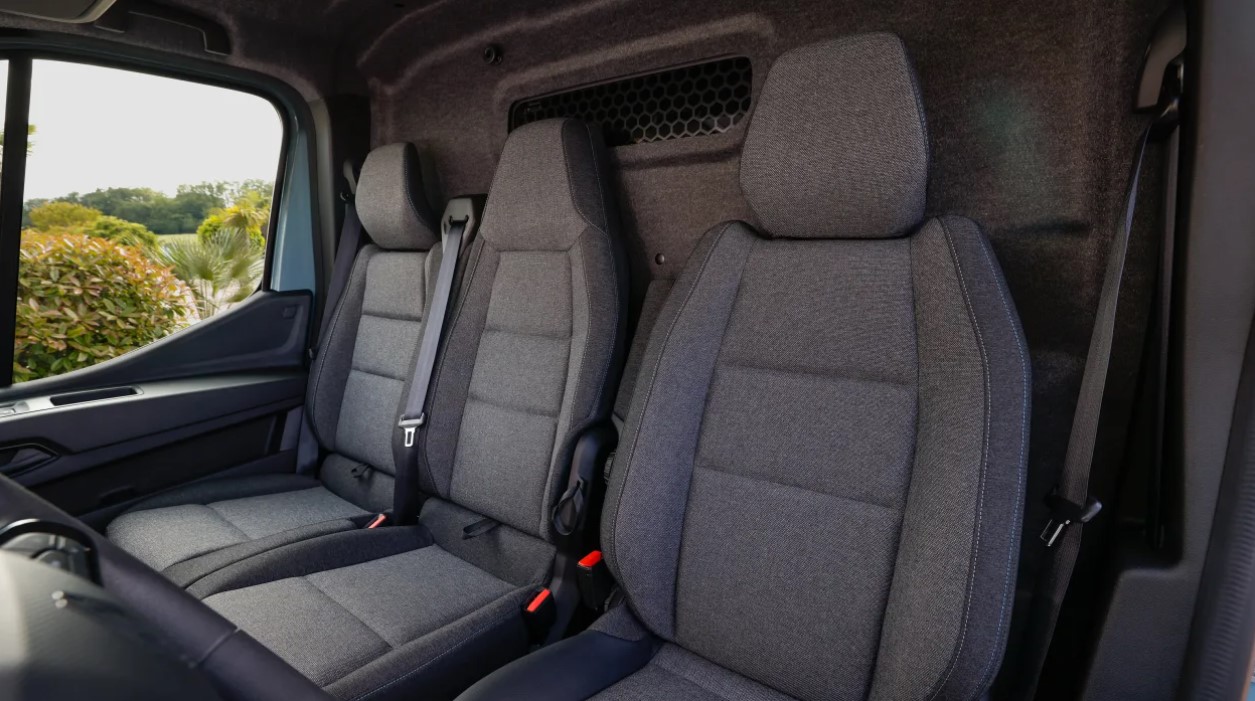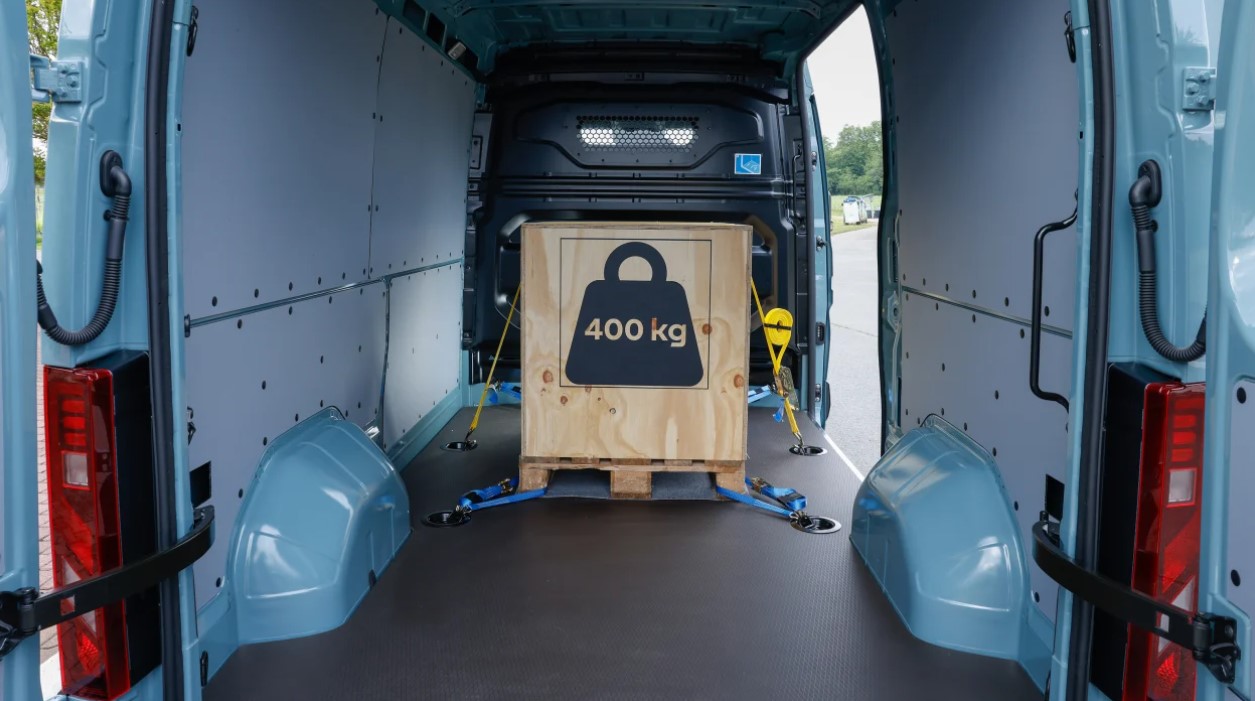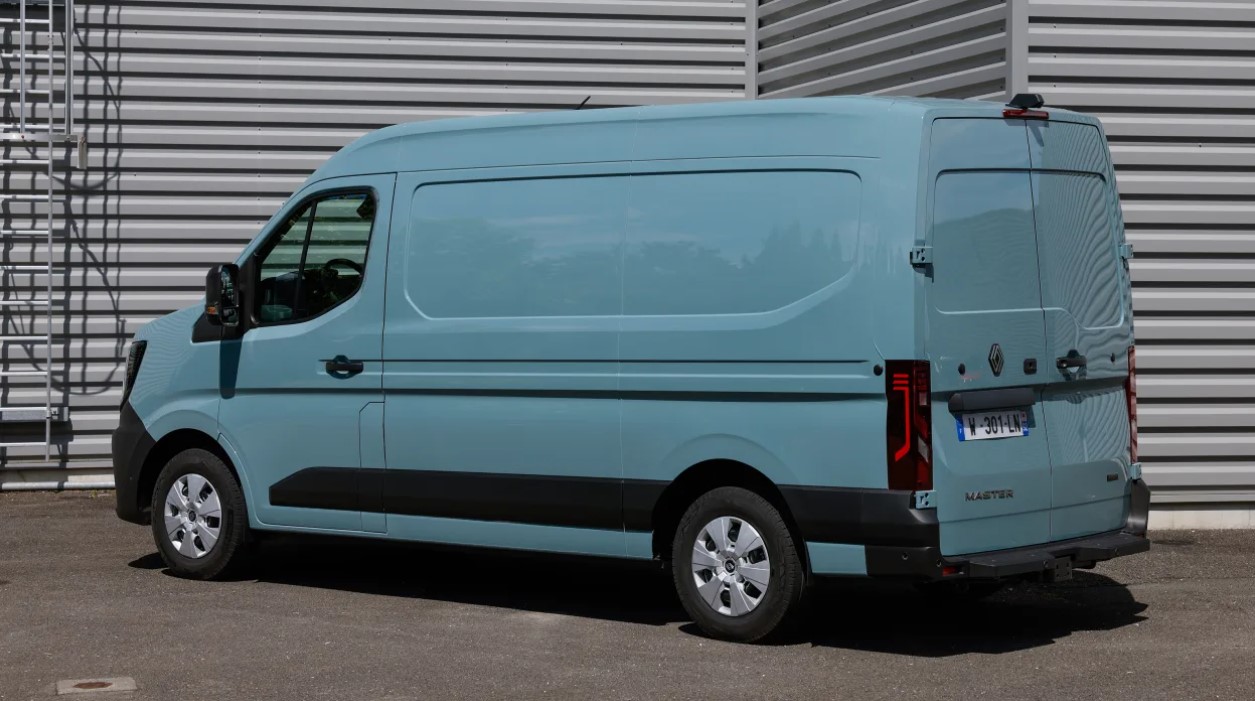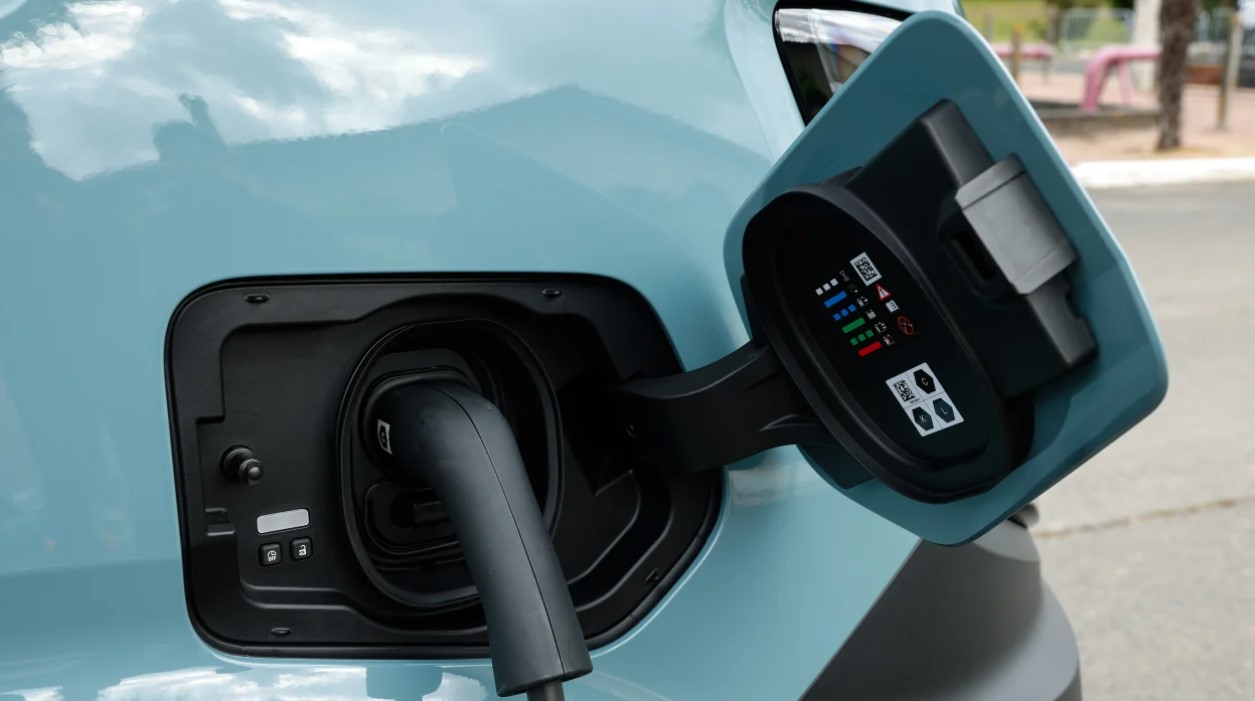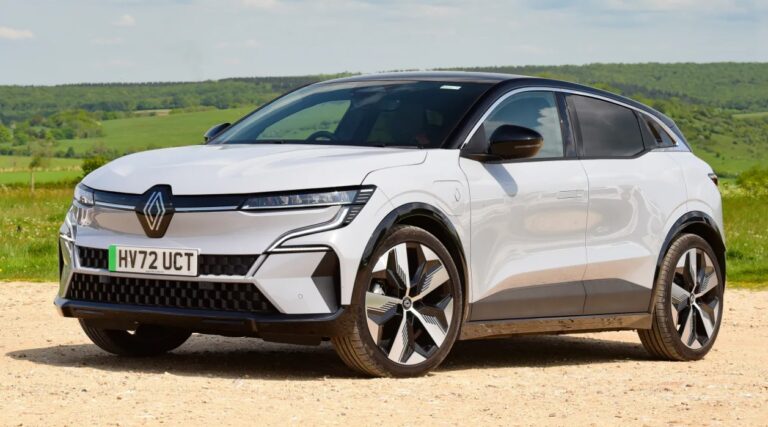2026 Renault Master E-Tech Specs, Dimensions, Features
2026 Renault Master E-Tech Specs, Dimensions, Features – When redesigning an automobile, automakers seldom decide to start from scratch, even if the fourth-generation 2026 Renault Master E-Tech is currently on the market. In an attempt to surpass the Ford Transit and Mercedes Sprinter, which now hold the top two spots in Europe for heavy van sales, respectively, Renault took the critical choice to start from scratch.
With a fresh look and a renewed focus on aerodynamic efficiency, the Mk4 2026 Renault Master E-Tech replaces the third-generation model, which was first introduced in 2010 and then updated in 2019. Compared to its brothers, the Trafic and Kangoo, it is the largest van in the brand’s lineup and is capable of transporting much greater loads.
The panel and crew cab bodies are now available in three different length and height combinations, in addition to several factory modifications. Renault claims that there are 40 distinct body types available. Subtle design decisions including a more sharply sloped windshield and small aero elements in the front bumper have reduced drag by 20% in comparison to the previous Master in order to enhance EV range. 2026 Renault Master E-Tech Specs
Table of Contents
2026 Renault Master E-Tech Redesign and Update Plan
Exterior & Interior
In addition to the Transit and Sprinter, the 2026 Renault Master E-Tech also features the Volkswagen Crafter, Fiat Ducato, Iveco Daily, Vauxhall Movano, and Citroen Relay. Soon, a brand-new Nissan Interstar based on the Master will be available. The full-whack L3H3 has a cargo volume of 15 cubic meters, while the payload of the L2H2 model is around 11 cubic meters. Crucially, the sliding door’s 100 mm larger load area and 40 mm wider opening than the previous model make it simpler to load and unload heavy objects.
You’ll see that the inside upgrades are just as significant as the outside ones when you exit the old Master and enter the new one. The redesigned dashboard boasts a sleek 10-inch touchscreen and the same openR Link infotainment system seen in Renault passenger cars. In addition to comfortable seats for three people, the cabin is practical and contains 135 liters of storage.
The Renault passenger vehicle and the Master are similar in terms of the driving experience as well. Everything about the Master appears pleasantly car-like, from the weighting of the controls to the noise levels and ride comfort, making it an easy and fun van to drive both in town and on the highway. When you combine a long electric range, a powerful load capacity, and a reasonable price tag, you get a fantastic, large van that makes an impact where it matters.
The respectable 2026 Renault Master E-Tech bodystyles include panel vans, crew cabs, chassis cabs, and several factory-approved customizations. The panel van has a comparable load capacity of 10.8m3, 13.0m3, and 14.8m3 and comes in L2H2, L3H2, or L3H3 versions. The Citroen Relay and Iveco Daily are somewhat more competent than the similar Ford Transits, but they still outperform the Master with load capacities of up to 17.0m3 and 19.6m3, respectively.
The diesel Masters are currently only offered with a maximum gross weight of 3.5 tons, but the Master E-Tech comes in a 4.0-ton version. The L2H2 diesel Master can carry more goods than a Transit of the same size, which can only carry 1,472 kg, thanks to its maximum cargo capacity of 1,971 kg.
Renault used a relatively small 87kWh battery to keep the Master E-Tech lightweight. Up to 1,125 kg may be carried by the 3.5-ton Master E-Tech and up to 1,625 kg by the 4.0-ton Master E-Tech. This implies that the maximum cargo capacities are higher than those of rivals who use electric vehicles. A Mercedes eSprinter can only transport 774 kg due to its 3.5-ton weight.
These measurements have been raised to 3,225 mm (3,855 mm for L3 models) and 1,312 mm, respectively, by adding 40 mm to the sliding door opening’s width and 100 mm to the load area. Since it was never difficult to get a Euro pallet through the former Master’s entrance, this won’t be an issue.
The electric Master has a special “vehicle to load” (V2L) charging option that allows you to utilize power outlets in the cabin and load area to run equipment and appliances directly from the batteries. “Vehicle to grid” (V2G) charging is another way to provide power back into the grid.
The cabin of the 2026 Renault Master E-Tech appears to be a major upgrade over the model that came before it. Heavy trucks served as the inspiration for the updated S-shaped dashboard, which adds legroom and tilts numerous key buttons toward the driver. It is a far cry from the Renault vans of the past since it looks much more like a normal passenger car than a traditional commercial vehicle. We had no issue finding a comfortable driving position because of the great vision, the large mirrors that are out of the way of the A-pillars, and the ample seat and steering wheel adjustment.
A crisp 10-inch infotainment screen with Google-based software and compatibility for Apple CarPlay and Android Auto is standard on the Advance and Extra trim levels. It is well situated next to the driver’s seat, responsive, and simple to operate. The dashboard also serves as a handy ledge for your hand to rest on when using the touchscreen while on the run. A wireless smartphone charging station sits atop large, sturdy temperature control knobs. The electric variants of the 2026 Renault Master E-Techs include a digital driver’s display (the digital display will be an option in 2025), whereas the diesel cars have analog dials.
The base Advance model has a windscreen wiper, automated lighting, rear parking sensors, electronic windows, and manual air conditioning, among other things. Blue leather stitching, Google Maps, LED load area lighting, voice control for the infotainment system, and a few additional 12V outlets are features of the more trimmed version. Given the modern electric drivetrain, it seems a touch out of date that all of the current models lack keyless entry or start and only have manual handbrakes. Van drivers would probably choose for the conventional approach, though, because it is clear whether it is on or off. In 2025, an electronic product will be accessible, according to Renault.
There is 135 liters of storage space inside, which includes large bins above the dashboard and a large chamber underneath the center seat. A handy workstation with USB-C ports for charging devices is formed when the seat is lowered. There is just one huge cup holder on either side of the dashboard, thus the center passenger must bring their own coffee. 2026 Renault Master E-Tech Specs
2026 Renault Master E-Tech Specs
Engine & Performance
The diesel vans have front-wheel drive and have a horsepower range of 128 to 168. Although the standard gearbox is a six-speed manual, all models save the least powerful will come with a new nine-speed automatic transmission. The electric Master E-Tech has a class-topping range of up to 285 miles thanks to its large 87kWh battery and sleek new exterior. The Ford E-Transit, which is coupled to a front-mounted engine with 138 horsepower and 300 Nm of torque, is around 130 Nm behind the slowest diesel and 50 Nm behind it. A smaller battery and motor combination is also offered to other markets.
Three diesel and one electric version of the 2026 Renault Master E-Tech will be offered in the UK. New 2.0-liter Blue dCi engines that produce 128 horsepower, 148 horsepower, and 168 horsepower, respectively, power the diesels. The first two feature a six-speed manual gearbox, while the most powerful of the three has a new nine-speed automatic transmission. It costs an extra £2000 to install the 148-bhp engine to the auto “box.” For heavy-duty Masters, only the manual transmission and 148 horsepower engine are offered.
Although the 148bhp version of the Transit has a lesser peak torque of 360 Nm than a comparable model, it still has enough power when traveling at modest speeds. We tested it on a variety of routes with a 400 kg load in the back, and it had no issue keeping up with traffic in town or on the highway. We think the pulling force is more than sufficient for most users, and it only begins to weaken around 3,000 rpm. If you frequently approach the Master’s load capacity, the 168bhp gives you a little extra shove, but it only becomes noticeable when you’re moving fast. The 360Nm torque should theoretically make carrying big items more pleasant.
The six-speed manual gearbox is a joy to use, with a short throw and a strong action that makes shifting between speeds straightforward. The clutch pedal has the ideal weight for commuting and is also simple to operate. The diesels have excellent overall refinement; the only time you feel engine noise is when you floor it and let the rpm to rise. Driving a car isn’t all that different from this.
The electric Master E-Tech is much more advanced to use since it has a smooth, silent motor without any gears. It doesn’t have the speed or overall performance of the 430 Nm E-Transit because it only has 138 horsepower and 300 Nm of torque, but it seemed nimble enough to get around town while carrying a 400 kg load. The regenerative braking mode “B,” which allows for nearly one-pedal driving and significantly lowers the van’s speed when the throttle is released, is inconveniently unadjustable.
Regardless of the weight of the luggage, the pedal always feels the same since the Master’s brakes’ power assistance adjusts to any weight in the rear. The brakes are unique because of this. Even though we couldn’t test the Master with different loads, the brakes were strong and dependable at all speeds, and the pedal appeared to be proportionate to the weights of the accelerator and clutch.
Because the 2026 Renault Master E-Tech has a shorter wheelbase than the previous model, which results in a lower turning radius, we had no issue driving through the tiny streets of France. It is easy to park in its lane on the interstate due to its accurate and fun handling at greater speeds. The Master’s ability to manage both large and little bumps is what defines the ride quality; thankfully, there are no rattles. The standard-fit bulkhead effectively separates the driver from the cargo compartment and prevents knocks and bangs from reverberating into the cabin. 2026 Renault Master E-Tech Specs
2026 Renault Master E-Tech Fuel Economy
The more streamlined body of the new 2026 Renault Master E-Tech cuts drag by 20%, making it the most aerodynamically efficient van in its class. In fact, that lowers fuel consumption and CO2 emissions while increasing the electric range of the Master E-Tech.
The diesels are powered by a brand-new Blue dCi 2.0-liter four-cylinder engine with three power levels. The most powerful 170 engine can attain a combined cycle fuel economy of up to 33.2 mpg, which is comparable to the basic 130 engine. The mid-tier 150 engine performs marginally better, reaching up to 34 mpg. A nine-speed automatic is likely to result in a little drop in fuel efficiency; keep in mind that these figures only apply to Masters with manual transmissions.
Compared to the leaving Master, the class’s CO2 stats are excellent, down by 39g/km. The exact quantity varies depending on the rules, however all engines emit between 196 and 236 g/km. There is a “Eco” mode that only reduces engine power by 30% in order to maximize fuel efficiency.
The electric Master E-Tech has a 285-mile range with its 87kWh battery. Its aerodynamically efficient bodywork enables it to have a competitive range, beating the 249-mile maximum of the latest E-Transit, the 261-mile range of the Citroen e-Relay, and the 273-mile range of the Mercedes eSprinter, even though it has a smaller battery pack than rivals. The battery lost 21% of its charge over 52 miles during our test drive with a 400 kg weight, suggesting a loaded real-world range of around 250 miles. We drove on a mix of city and speed routes in 20 degree temps with the air conditioner going.
By DC rapid-charging the battery at up to 130kW, you may extend its range by over 140 miles in 30 minutes. With the 22kW maximum power for AC home charging, a 10–100% recharge may be completed in around four hours. Renault claims that their special battery temperature management system is more effective, despite the fact that there isn’t a heat pump technology to mention. In the event that something goes wrong, repairs may be simpler and less costly because the battery itself is made up of twelve distinct modules that can be removed, repaired, or replaced independently.
2026 Renault Master E-Tech Safety Features
Since the automobile is brand-new, it is challenging to assess its dependability at this time. The engines in the present Renault Trafic and the forthcoming 2026 Renault Master E-Tech model are identical, and thus far, they seem to be operating smoothly. The record of the prior model was perfect.
All Master editions contain a comprehensive set of safety and support features. Traffic sign recognition, automatic emergency braking, intelligent speed assist, lane-keeping assistance, and driver attention monitoring are some of the 20 notable features. The integrated rear parking sensors, trailer stability assistance, and (optional) digital rearview mirror are further helpful technologies. We think the latter is worth the expense because it is clear, bright, and nearly immediate.
2026 Renault Master E-Tech Release Date & Price
In L2H2 configuration, the base diesel master begins at less than £34,000 (+VAT). The Master E-Tech is more costly, of course, starting at around £43,000 (+VAT), but thanks to the government’s low emission vehicle subsidies, it costs less than £40,000. The Ford E-Transit starts at over £50,000, while the Mercedes eSprinter will cost over £60,000.
Note: The details included in this blog post are derived from pre-release material that was accessible when the article was written. If you want the latest information, you should check official sources or call your nearest dealership.
